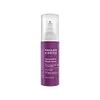What's inside
What's inside
 Key Ingredients
Key Ingredients

 Benefits
Benefits

 Concerns
Concerns

 Ingredients Side-by-side
Ingredients Side-by-side

Water
Skin ConditioningButylene Glycol
HumectantGlycerin
HumectantAscorbyl Glucoside
AntioxidantTranexamic Acid
AstringentEuterpe Oleracea Fruit Extract
1-Methylhydantoin-2-Imide
Skin ConditioningSodium Acrylates Copolymer
Phenoxyethanol
PreservativeCarbomer
Emulsion StabilisingSodium Hydroxide
BufferingCetearyl Olivate
Benzyl Alcohol
PerfumingSorbitan Olivate
EmulsifyingHydroxyethyl Acrylate/Sodium Acryloyldimethyl Taurate Copolymer
Emulsion StabilisingLecithin
EmollientSqualane
EmollientEthylhexylglycerin
Skin ConditioningSodium Gluconate
Skin ConditioningPolysorbate 60
EmulsifyingDehydroacetic Acid
PreservativeLactobacillus Ferment
Skin ConditioningSorbitan Isostearate
EmulsifyingWater, Butylene Glycol, Glycerin, Ascorbyl Glucoside, Tranexamic Acid, Euterpe Oleracea Fruit Extract, 1-Methylhydantoin-2-Imide, Sodium Acrylates Copolymer, Phenoxyethanol, Carbomer, Sodium Hydroxide, Cetearyl Olivate, Benzyl Alcohol, Sorbitan Olivate, Hydroxyethyl Acrylate/Sodium Acryloyldimethyl Taurate Copolymer, Lecithin, Squalane, Ethylhexylglycerin, Sodium Gluconate, Polysorbate 60, Dehydroacetic Acid, Lactobacillus Ferment, Sorbitan Isostearate
Water
Skin ConditioningNiacinamide
SmoothingGlycerin
HumectantTranexamic Acid
AstringentC13-15 Alkane
SolventCaprylic/Capric Triglyceride
MaskingDicaprylyl Carbonate
EmollientEthyl Macadamiate
Skin ConditioningBehenyl Alcohol
EmollientGlyceryl Stearate
EmollientButylene Glycol
HumectantSilybum Marianum Seed Oil
Skin ConditioningTocopherol
AntioxidantLactobacillus/Coconut Fruit Juice Ferment Filtrate
Skin ConditioningLecithin
EmollientBakuchiol
AntimicrobialXanthan Gum
EmulsifyingCaprylyl Glycol
EmollientHydrogenated Lecithin
EmulsifyingAllantoin
Skin ConditioningGlycine Soja Oil
EmollientHexylene Glycol
EmulsifyingBoerhavia Diffusa Root Extract
Skin ProtectingGlycine Soja Sterols
EmollientCitric Acid
BufferingSodium Phytate
Malic Acid
BufferingPhenoxyethanol
PreservativeEthylhexylglycerin
Skin ConditioningWater, Niacinamide, Glycerin, Tranexamic Acid, C13-15 Alkane, Caprylic/Capric Triglyceride, Dicaprylyl Carbonate, Ethyl Macadamiate, Behenyl Alcohol, Glyceryl Stearate, Butylene Glycol, Silybum Marianum Seed Oil, Tocopherol, Lactobacillus/Coconut Fruit Juice Ferment Filtrate, Lecithin, Bakuchiol, Xanthan Gum, Caprylyl Glycol, Hydrogenated Lecithin, Allantoin, Glycine Soja Oil, Hexylene Glycol, Boerhavia Diffusa Root Extract, Glycine Soja Sterols, Citric Acid, Sodium Phytate, Malic Acid, Phenoxyethanol, Ethylhexylglycerin
 Reviews
Reviews

Ingredients Explained
These ingredients are found in both products.
Ingredients higher up in an ingredient list are typically present in a larger amount.
Butylene Glycol (or BG) is used within cosmetic products for a few different reasons:
Overall, Butylene Glycol is a safe and well-rounded ingredient that works well with other ingredients.
Though this ingredient works well with most skin types, some people with sensitive skin may experience a reaction such as allergic rashes, closed comedones, or itchiness.
Learn more about Butylene GlycolEthylhexylglycerin (we can't pronounce this either) is commonly used as a preservative and skin softener. It is derived from glyceryl.
You might see Ethylhexylglycerin often paired with other preservatives such as phenoxyethanol. Ethylhexylglycerin has been found to increase the effectiveness of these other preservatives.
Glycerin is already naturally found in your skin. It helps moisturize and protect your skin.
A study from 2016 found glycerin to be more effective as a humectant than AHAs and hyaluronic acid.
As a humectant, it helps the skin stay hydrated by pulling moisture to your skin. The low molecular weight of glycerin allows it to pull moisture into the deeper layers of your skin.
Hydrated skin improves your skin barrier; Your skin barrier helps protect against irritants and bacteria.
Glycerin has also been found to have antimicrobial and antiviral properties. Due to these properties, glycerin is often used in wound and burn treatments.
In cosmetics, glycerin is usually derived from plants such as soybean or palm. However, it can also be sourced from animals, such as tallow or animal fat.
This ingredient is organic, colorless, odorless, and non-toxic.
Glycerin is the name for this ingredient in American English. British English uses Glycerol/Glycerine.
Learn more about GlycerinLecithin is a term for a group of substances found in the cell membranes of plants, animals, and humans. They are made up of mixture of phospholipids.
This ingredient has emollient and emulsifying properties.
As an emollient, lecithen helps soften the skin and creates a barrier to keep moisture in.
As an emulsifier, it also helps prevent water and oil ingredients from separating. Lecithin can also help ingredients be better absorbed by the skin.
This is because the phospholipids in lecithin produce liposomes. Liposomes help other ingredients get through the skin barrier.
Depending on the source of this ingredient, lecithin may not be fungal acne safe. This is because some sources of lecithin come from soybean oil, which may feed the malassezia yeast that feeds fungal acne.
We recommend reaching out to the brand you are purchasing from to inquire about the source of their lecithin.
Some other names for this ingredient include soy lecithin and deoiled soy lecithin.
Learn more about LecithinPhenoxyethanol is a preservative that has germicide, antimicrobial, and aromatic properties. Studies show that phenoxyethanol can prevent microbial growth. By itself, it has a scent that is similar to that of a rose.
It's often used in formulations along with Caprylyl Glycol to preserve the shelf life of products.
Tranexamic Acid is best used for treating hyperpigmentation, discoloration, and melasma. It can also help build a stronger skin barrier.
Once applied, Tranexamic Acid starts decreasing inflammation from UV exposure. Tranexamic Acid also prevents our skin cells from meeting the pigment production cells.
Its brightening property makes it great at reducing the appearance of acne scars and marks.
Fun fact: Tranexamic Acid is also a medication used to reduce heavy bleeding.
This acid is derived from lysine, an amino acid.
Learn more about Tranexamic AcidWater. It's the most common cosmetic ingredient of all. You'll usually see it at the top of ingredient lists, meaning that it makes up the largest part of the product.
So why is it so popular? Water most often acts as a solvent - this means that it helps dissolve other ingredients into the formulation.
You'll also recognize water as that liquid we all need to stay alive. If you see this, drink a glass of water. Stay hydrated!
Learn more about Water